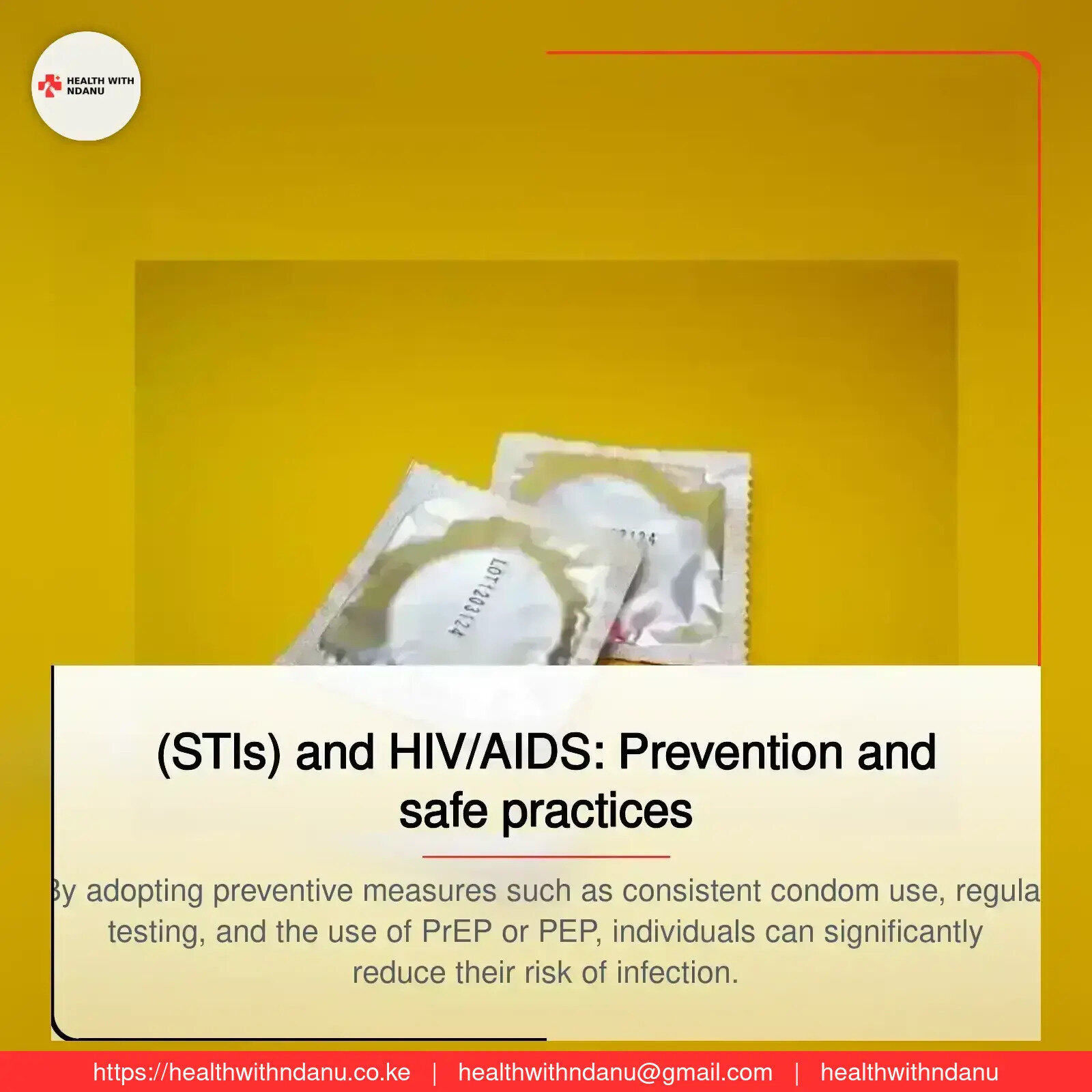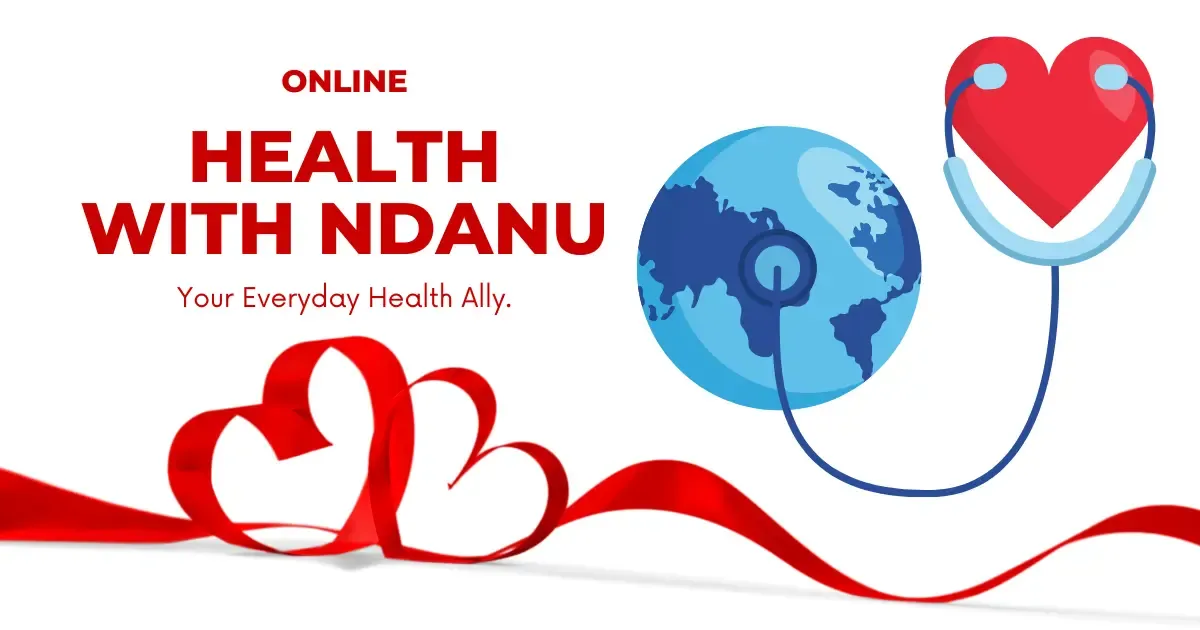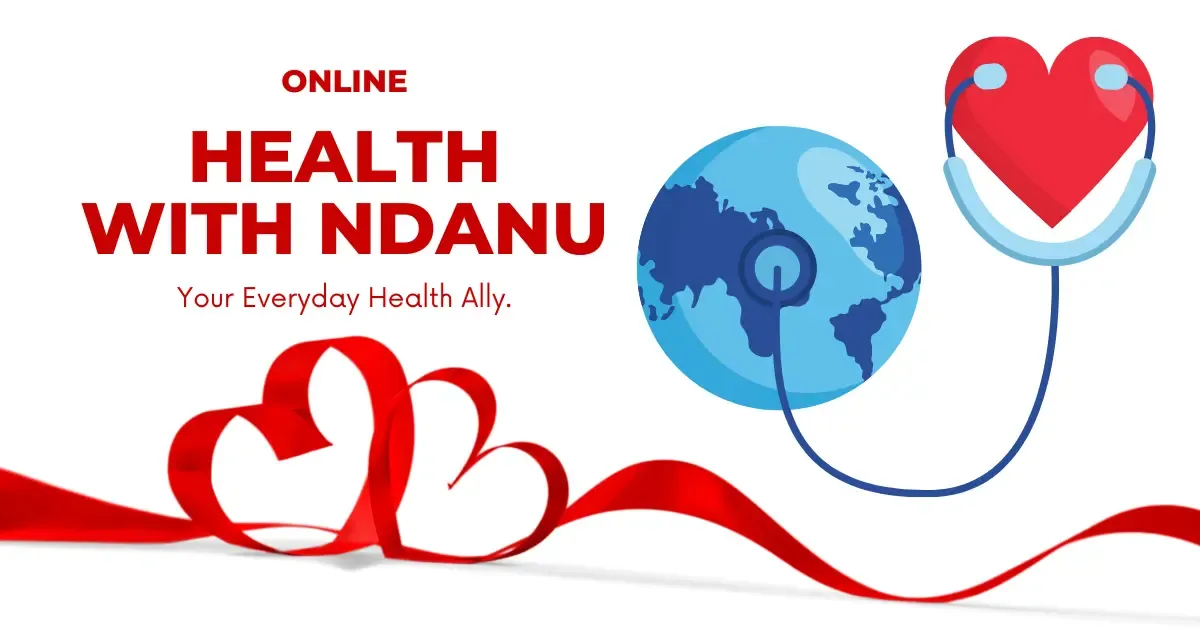(STIs) and HIV/AIDS: Prevention and safe practices
- by Diana Ndanu
- 06 December, 2024
- 0 Comments
- 5 Mins



Sexually transmitted infections (STIs) and HIV/AIDS remain major global health concerns, affecting millions of people every year. However, with proper awareness, prevention strategies, and the adoption of safe practices, the spread of these infections can be significantly reduced. This article focuses on providing in-depth information about STIs and HIV/AIDS prevention.
Understanding STIs and HIV/AIDS
What Are STIs?
Sexually transmitted infections (STIs) are infections primarily spread through sexual contact, including vaginal, anal, and oral sex. Common STIs include:
- Chlamydia
- Gonorrhea
- Syphilis
- Human papillomavirus (HPV)
- Genital herpes
- Trichomoniasis
What is HIV/AIDS?
Human Immunodeficiency Virus (HIV) is a virus that attacks the immune system. Without treatment, it can lead to Acquired Immunodeficiency Syndrome (AIDS), a severe stage of the infection characterized by a weakened immune system and increased vulnerability to infections and certain cancers.
Signs and Symptoms of STIs and HIV/AIDS
STIs
Symptoms vary depending on the type of infection but may include:
- Pain during urination or intercourse.
- Abnormal genital discharge.
- Genital sores, warts, or rashes.
- Unusual itching or irritation in the genital area.
HIV/AIDS
- Early symptoms: Fever, fatigue, swollen lymph nodes, and sore throat (flu-like symptoms).
- Advanced stages: Rapid weight loss, persistent diarrhea, chronic fatigue, and opportunistic infections.
It’s important to note that many STIs and HIV infections may initially have no symptoms, underscoring the importance of regular testing.
Prevention of STIs and HIV/AIDS
- Safe Sexual Practices
- Use of Condoms: Consistently and correctly using latex or polyurethane condoms can significantly reduce the risk of STIs and HIV.
- Limit Sexual Partners: Reducing the number of sexual partners lowers exposure risk.
- Mutual Monogamy: Engaging in a mutually monogamous relationship with an uninfected partner can prevent transmission.
- Avoid Risky Sexual Behaviors: Such as unprotected sex or sex with high-risk individuals
- Regular Testing
- Get tested for STIs and HIV regularly, especially if you have multiple sexual partners or engage in high-risk behaviors.
- Early detection enables prompt treatment and reduces the risk of spreading infections to others.
- Vaccination
- HPV Vaccine: Protects against certain strains of HPV that can cause cervical cancer and genital warts.
- Hepatitis B Vaccine: Prevents Hepatitis B, an STI that can lead to chronic liver disease.
- PrEP and PEP for HIV Prevention
- Pre-exposure Prophylaxis (PrEP): A daily pill for HIV-negative individuals at high risk of infection.
- Post-exposure Prophylaxis (PEP): A medication regimen taken within 72 hours of potential HIV exposure.
- Avoid Sharing Needles. Sharing needles for drug use, tattoos, or piercings increases the risk of HIV and other bloodborne infections.
- Safe Pregnancy Practices Pregnant women should undergo HIV testing to reduce the risk of mother-to-child transmission during pregnancy, childbirth, or breastfeeding.
Awareness and Education
Importance of STI and HIV/AIDS Awareness
- Increases knowledge about the modes of transmission.
- Encourages safer sexual practices.
- Promotes stigma reduction, encouraging people to seek testing and treatment.
Spreading Awareness
- Sexual Health Education: Schools, colleges, and community programs should provide comprehensive sexual health education that includes STI and HIV prevention.
- Media Campaigns: Use social media, television, and print media to share factual information.
- Community Outreach: Partner with healthcare providers and organizations to provide free testing and counseling.
Treatment and Management
STIs
- Many STIs, such as chlamydia, gonorrhea, and syphilis, can be cured with antibiotics when detected early.
- Viral infections like herpes and HPV can be managed with antiviral medications to reduce symptoms and transmission risk.
HIV/AIDS
- Antiretroviral Therapy (ART): Lifelong treatment that suppresses the virus and prevents progression to AIDS.
- Regular follow-ups and adherence to ART can lead to an undetectable viral load, meaning the virus cannot be transmitted to others (U=U: Undetectable = Untransmittable).
The Role of Healthcare Providers in Prevention and Awareness
Healthcare providers play a critical role in:
- Counseling Patients: Offering guidance on safe practices and available prevention tools.
- Providing Testing Services: Encouraging routine screening for sexually active individuals.
- Dispensing Medication: Prescribing PrEP, PEP, and ART to those in need.
- Educating Communities: Partnering with schools and organizations to deliver accurate information about STIs and HIV/AIDS.
Overcoming Stigma and Barriers
- Combat Myths: Educate communities about the realities of STIs and HIV to dispel misconceptions.
- Promote Confidentiality: Ensure that testing and treatment services are private and judgment-free.
- Empower Vulnerable Populations: Focus on at-risk groups, including LGBTQ+ individuals, sex workers, and adolescents.
Conclusion
Preventing sexually transmitted infections and HIV/AIDS requires a multi-faceted approach that combines awareness, safe practices, and accessible healthcare. By adopting preventive measures such as consistent condom use, regular testing, and the use of PrEP or PEP, individuals can significantly reduce their risk of infection. Healthcare providers, educators, and community leaders must work together to create an environment where everyone has access to the information and resources needed to protect their sexual health.
Take Action Today: Visit your nearest healthcare provider or sexual health clinic for testing, counseling, and preventive care. Empower yourself with knowledge and safe practices to lead a healthy and fulfilling life.
Got Your Own Experience? Share with us
Popular Categories
Mablogu Zinazobambwa Sana
Daily Newsletter
Get all the top stories from Blogs to keep track.



